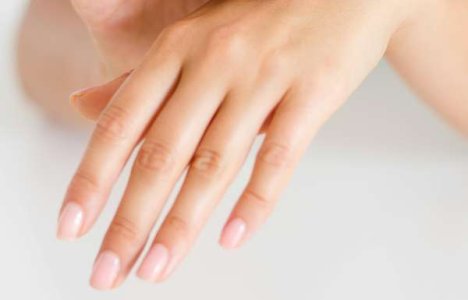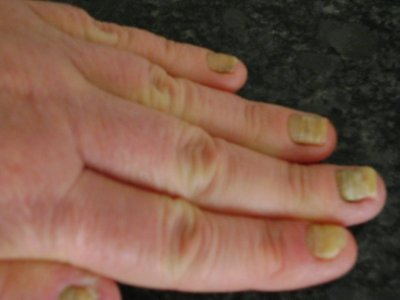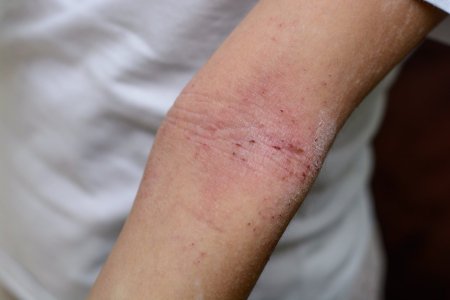Experts Reveal Shocking Health Secrets Hidden in Your Nails – Find Out Now!
By
Michelle E.
- Replies 0
Disclaimer: The information provided in this article is for educational purposes only and is not intended as a substitute for professional medical advice, diagnosis, or treatment. Always consult your physician or other qualified healthcare providers with any questions you may have regarding a medical condition or before making any changes to your health regimen.
As we age, we often become more attuned to the messages our bodies send us. A twinge here, a creak there – each has its own tale. But did you know that your nails, those hardworking shields at your fingertips, are also whispering secrets about your health?
Dr. Soraya Azzawi, MD, FAAD guides us to the world of nail health, decoding the signs, and offering expert advice on when to seek professional care. Let’s remember that our nails are windows to our well-being. Here’s how we can understand them better!
The Anatomy of Healthy Nails
Before we can understand the warnings, we must first recognize what constitutes a healthy nail. Dr. Soraya Azzawi, MD, FAAD, a board-certified dermatologist, paints the picture of the ideal nail: smooth, ridge-free, and consistent in texture. A robust cuticular seal and a nail plate that adheres firmly to the nail bed are also signs of good nail health.

But as we all know, the journey through life can leave its mark, and our nails are no exception. Age, for one, can naturally lead to changes in nail strength and texture. However, when changes are sudden or severe, it's time to listen closely to what they're trying to tell us.
Deciphering the Messages in Nail Changes
Nails can be the telltale for systemic health issues. For instance, Beau's lines – those horizontal grooves across the nail – may signal a past illness or trauma. Clubbed nails, with their increased curvature, could hint at pulmonary or cardiovascular conditions. And when it comes to color, Lindsay's nails and Terry's nails might be raising a red flag for potential liver or heart problems.
Brittle nails are a common complaint among the senior community. While they can be a natural part of aging, they may also indicate metabolic conditions like thyroid disease or iron deficiency anemia, according to Dr. Thomas Stringer, a dermatologist with MedStar Health. Hormonal shifts can play a role too, and let's not forget the potential for fungal infections.

Nail psoriasis is another condition that can cause nail crumbling and lifting. It's not just about the nails, though – this condition can be an indicator for psoriatic arthritis, making early detection and treatment crucial.
Those mysterious dark lines following the nail's grooves? They could be as benign as splinter hemorrhages from a bump or knock. But they might also be a sign of something more concerning, like nail psoriasis, longitudinal melanonychia, or even, in rare cases, skin cancer.
White spots, often dismissed as minor injuries, can sometimes point to liver conditions or, again, nail psoriasis. It's clear that our nails can be a tapestry of tales about our internal health.
When to Consult the Experts
Not every nail imperfection is a cause for alarm. But certain signs should prompt a visit to a healthcare provider. Dr. Stringer advises seeking medical attention for rapid, unexplained changes, especially if there's swelling, pain, or bleeding around the nails, or if the nails are lifting from the bed or changing shape.
The GrayVine's Guide to Nail Care
While we're on the subject, let's not forget the importance of proper nail care. Keeping your nails clean and trimmed can prevent many issues. Moisturizing your nails and cuticles can help maintain their integrity.
Your nails are more than just a canvas for polish or a tool for scratching an itch. They're a barometer for your health, a part of your body that deserves as much care and attention as any other. So, take a moment to examine your nails. What are they telling you?

Remember, your nails are not just an accessory – they're an accessory to your health. Let's give them the attention they deserve and keep those hidden health messages out in the open.
Have you noticed changes in your nails that made you wonder about your health? Do you have tips for maintaining nail health as we age? Share your stories and questions in the comments below!
As we age, we often become more attuned to the messages our bodies send us. A twinge here, a creak there – each has its own tale. But did you know that your nails, those hardworking shields at your fingertips, are also whispering secrets about your health?
Dr. Soraya Azzawi, MD, FAAD guides us to the world of nail health, decoding the signs, and offering expert advice on when to seek professional care. Let’s remember that our nails are windows to our well-being. Here’s how we can understand them better!
The Anatomy of Healthy Nails
Before we can understand the warnings, we must first recognize what constitutes a healthy nail. Dr. Soraya Azzawi, MD, FAAD, a board-certified dermatologist, paints the picture of the ideal nail: smooth, ridge-free, and consistent in texture. A robust cuticular seal and a nail plate that adheres firmly to the nail bed are also signs of good nail health.

The color should be a uniform pink, without any yellowing, dark spots, or excessive whiteness. Image source: Pexels.
But as we all know, the journey through life can leave its mark, and our nails are no exception. Age, for one, can naturally lead to changes in nail strength and texture. However, when changes are sudden or severe, it's time to listen closely to what they're trying to tell us.
Deciphering the Messages in Nail Changes
Nails can be the telltale for systemic health issues. For instance, Beau's lines – those horizontal grooves across the nail – may signal a past illness or trauma. Clubbed nails, with their increased curvature, could hint at pulmonary or cardiovascular conditions. And when it comes to color, Lindsay's nails and Terry's nails might be raising a red flag for potential liver or heart problems.
Brittle nails are a common complaint among the senior community. While they can be a natural part of aging, they may also indicate metabolic conditions like thyroid disease or iron deficiency anemia, according to Dr. Thomas Stringer, a dermatologist with MedStar Health. Hormonal shifts can play a role too, and let's not forget the potential for fungal infections.

The color should be a uniform pink, without any yellowing, dark spots, or excessive whiteness. Image source: Pexels.
Nail psoriasis is another condition that can cause nail crumbling and lifting. It's not just about the nails, though – this condition can be an indicator for psoriatic arthritis, making early detection and treatment crucial.
Those mysterious dark lines following the nail's grooves? They could be as benign as splinter hemorrhages from a bump or knock. But they might also be a sign of something more concerning, like nail psoriasis, longitudinal melanonychia, or even, in rare cases, skin cancer.
White spots, often dismissed as minor injuries, can sometimes point to liver conditions or, again, nail psoriasis. It's clear that our nails can be a tapestry of tales about our internal health.
When to Consult the Experts
Not every nail imperfection is a cause for alarm. But certain signs should prompt a visit to a healthcare provider. Dr. Stringer advises seeking medical attention for rapid, unexplained changes, especially if there's swelling, pain, or bleeding around the nails, or if the nails are lifting from the bed or changing shape.
The GrayVine's Guide to Nail Care
While we're on the subject, let's not forget the importance of proper nail care. Keeping your nails clean and trimmed can prevent many issues. Moisturizing your nails and cuticles can help maintain their integrity.
Your nails are more than just a canvas for polish or a tool for scratching an itch. They're a barometer for your health, a part of your body that deserves as much care and attention as any other. So, take a moment to examine your nails. What are they telling you?
Key Takeaways
- Changes in the colour, texture, and shape of nails can sometimes be indicative of underlying health conditions.
- Healthy nails should be smooth, without ridges or grooves, and maintain a consistent texture and pink colour.
- Specific nail conditions such as Beau's lines, clubbed nails, and changes in colour can point to systemic illnesses including heart, liver, and thyroid diseases.
- It's advised to see a doctor if experiencing rapid, unexplained changes to nails or if there are symptoms such as swelling, pain, lifting of the nail from the nail bed, or changes in shape or texture.
Remember, your nails are not just an accessory – they're an accessory to your health. Let's give them the attention they deserve and keep those hidden health messages out in the open.
Have you noticed changes in your nails that made you wonder about your health? Do you have tips for maintaining nail health as we age? Share your stories and questions in the comments below!






